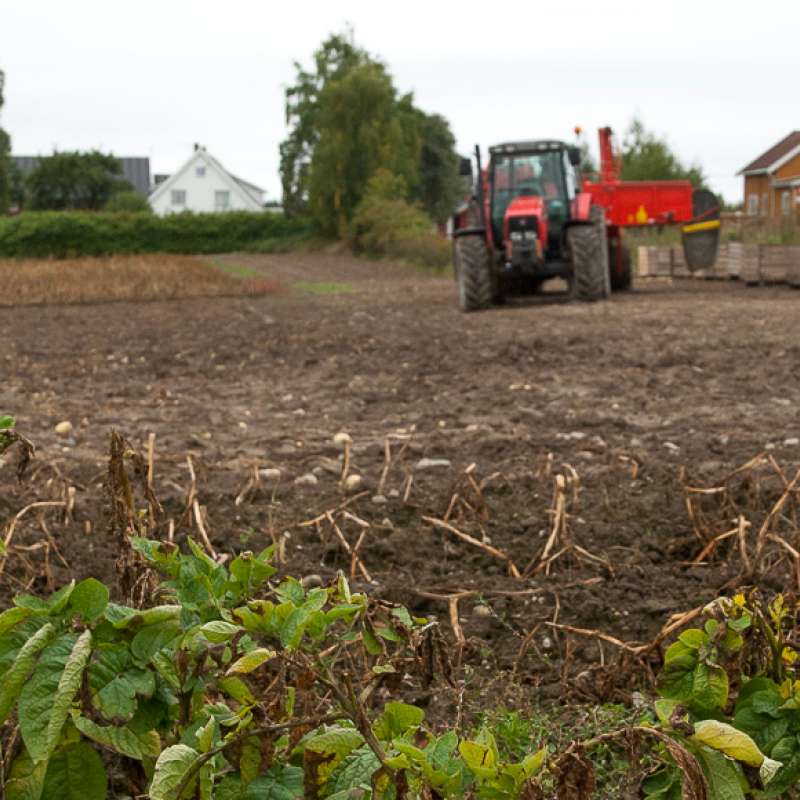Carl Emil Øyri
Overingeniør
Sammendrag
Soil disinfestation by steaming is being reconsidered for its efficiency in controlling or even eradicating pathogens, nematodes and weed seeds, particularly to avoid excess use of pesticides. Most weeds within a field result from seeds in the soil seedbank and therefore management of weed seeds in the soil seedbank offers practical long-term management of weeds, especially those difficult to control. We investigated the possibility of thermal control of seeds of grass weeds Bromus sterilis (barren brome) and Echinochloa crus-galli (barnyardgrass) using a prototype of a soil steaming device. Five different soil temperatures of 60, 70, 80, 90 and 99°C with an exposure duration of 3 min were tested. Four replications of 50 seeds of each species were placed in polypropylene-fleece bags. Bags in the same replicate of each target temperature were placed at the bottom of one plastic perforated basket container and covered by a 7-cm soil layer. Each basket was placed in the steaming container and steam was released from the top and vacuumed from the bottom of the container. Soil temperature was monitored by 10 thermocouples and steaming was stopped when 5 of the thermocouples had reached the target temperature. The basket was then removed from the steaming container after 3 min exposure time. Bags were taken out, opened, placed on soil surface in pots and covered by a thin layer of soil. Seed germination was followed for 8 weeks in the greenhouse. Non-steamed seeds were used as controls. It was shown that soil temperatures of 60, 70, 80, 90 and 99°C lasting for 3 min reduced the seed germination of barren brome by 83, 100, 100, 95 and 100% and seed germination of barnyardgrass by 74, 69, 83, 89 and 100% respectively, compared to the controls. Germination rate of control seeds were 94 and 71% for barren brome and barnyardgrass, respectively. These results show a promising seed mortality level of these two weed species by steaming and that steam is a potential method to control weed seeds, however further studies are needed to investigate the effect of other factors such as soil type and moisture content. Keywords: Non-chemical weed control, thermal soil disinfection, weed seedbank
Sammendrag
Invasive plant propagative material can be introduced to new regions as contaminants in soil. Therefore, moving soil should be done only when the soil has been verified to be free of invasive species. Stationary soil steaming as a non-chemical control method has the potential to disinfect soil masses contaminated with invasive species. We investigated the possibility of thermal control of propagative material of Bohemian knotweed (Reynoutria × bohemica) in two experiments using a prototype of a soil steaming device. Five soil temperatures of 60, 70, 80, 90 and 99 °C with an exposure duration of 3 min were tested. In each replicate and target temperature, rhizome cuttings containing at least two buds and shoot clumps were placed at the bottom of a plastic perforated basket and covered by a 7-cm soil layer. Each basket was placed in the steaming container and steam was released from the top and vacuumed from the bottom. Soil temperature was monitored by 10 thermocouples and steaming was stopped when 5 of the thermocouples had reached the target temperature. The basket was then removed from the steaming container after 3 min. Plant materials were taken out and planted in pots. Buds sprouting was followed for 8 weeks. Non-steamed plant materials were used as controls. Results showed 100% rhizome death at soil temperatures of ≥70 and 99 °C in the first and second experiments, respectively. Shoot clumps death was obtained at ≥90 °C in both experiments. These results showed that steaming at 99 °C for 3 min can guarantee control of Bohemian knotweed in infested soils supporting the steam treatment as a potential method of disinfecting soil against invasive species. However, depending on the intended re-use of the soil, further studies are needed on the effect of potential negative impacts of high temperatures on the soil quality.

